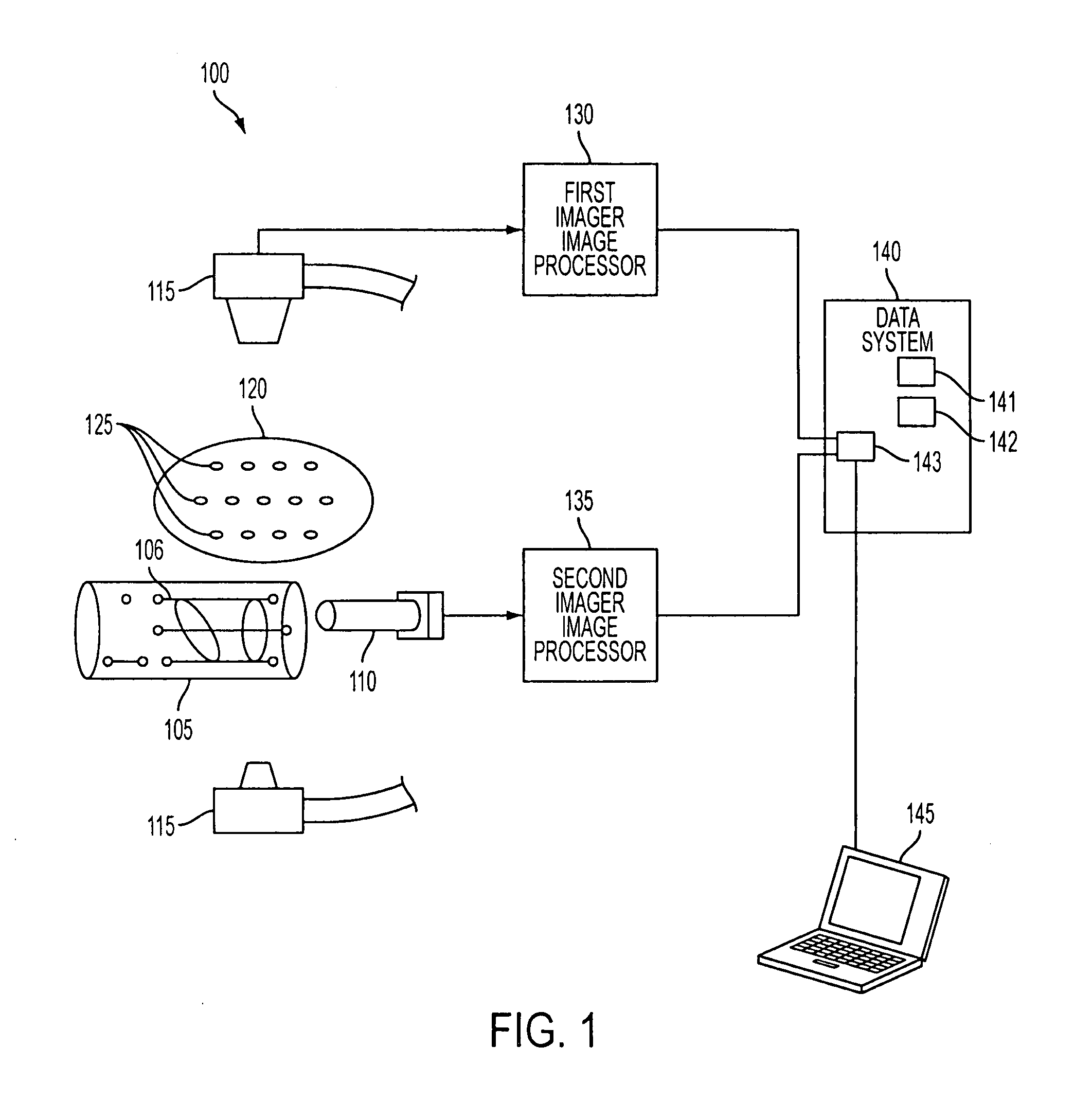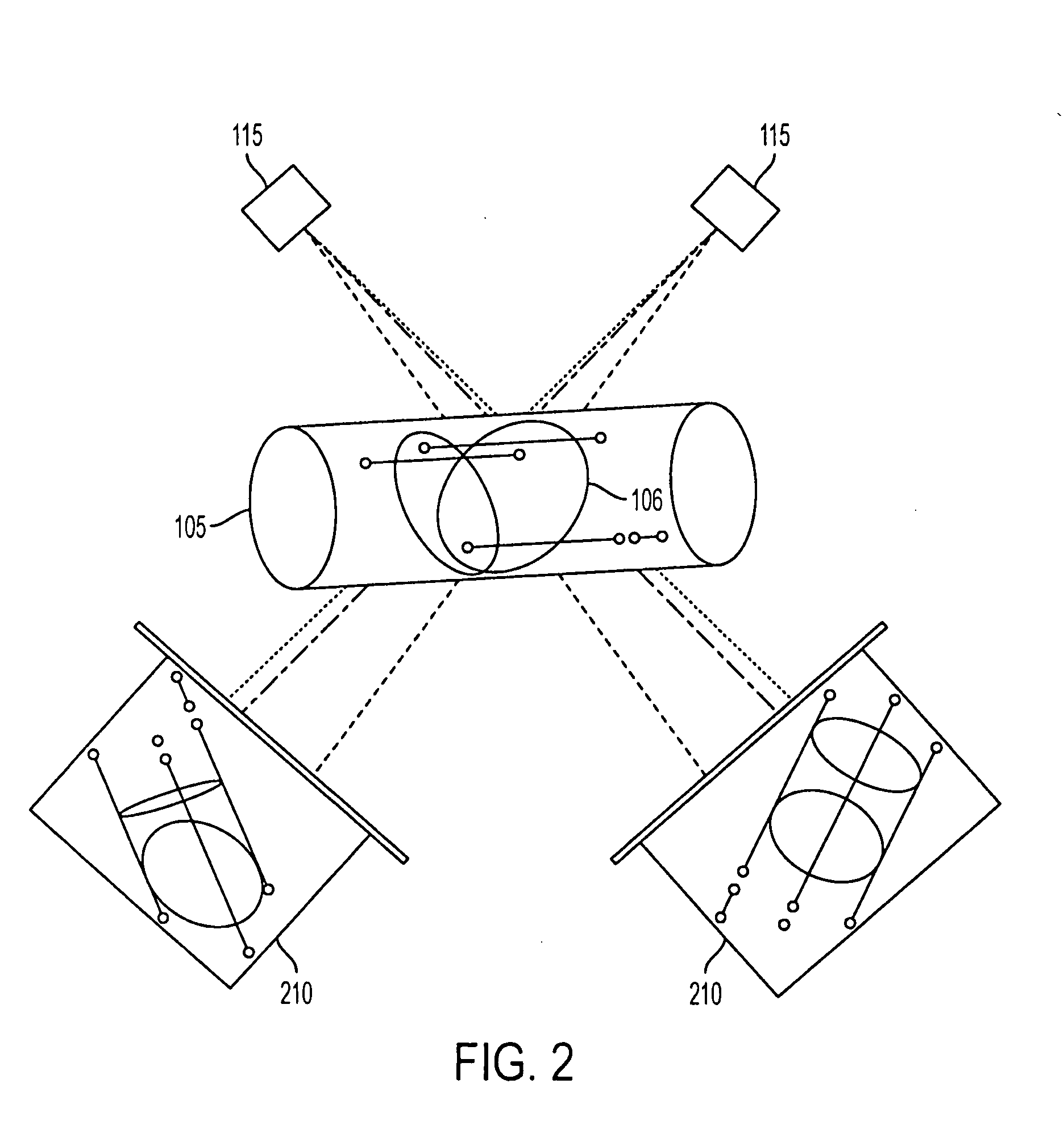Image registration of multiple medical imaging modalities using a multiple degree-of-freedom-encoded fiducial device
a fiducial device and degree of freedom technology, applied in the field of imaging registration of multiple medical imaging modalities, can solve the problems of not being used in quantitative intra-operative analysis, few attempts to relate fluoroscopic images to soft tissue anatomy, and little success, so as to improve the localization of surgically implanted objects, improve visualization and control, and facilitate dynamic dose calculation
- Summary
- Abstract
- Description
- Claims
- Application Information
AI Technical Summary
Benefits of technology
Problems solved by technology
Method used
Image
Examples
Embodiment Construction
[0048]The invention provides registration of two medical imaging modalities by registering multiple images from a first imaging system, preferably at different angles, to a three-dimensional coordinate frame defined by the field of view of a second medical imaging system. The two medical imaging modalities preferably complement each other such that one imaging modality provides better quality images of certain features than the other, whereas the second imaging modality provides better quality images of other features. Registering the images from the two imaging modalities is done by determining a pose estimation, wherein the pose estimation is a six degree of freedom (six-DOF) coordinate transformation. The six-DOF transformation may be represented as a transformation matrix, or some other mathematical representation, from the coordinate frame of a fiducial, such as a fiducial device, to the coordinate frame of the field of view of the first imaging modality. The fiducial device is...
PUM
 Login to View More
Login to View More Abstract
Description
Claims
Application Information
 Login to View More
Login to View More - R&D
- Intellectual Property
- Life Sciences
- Materials
- Tech Scout
- Unparalleled Data Quality
- Higher Quality Content
- 60% Fewer Hallucinations
Browse by: Latest US Patents, China's latest patents, Technical Efficacy Thesaurus, Application Domain, Technology Topic, Popular Technical Reports.
© 2025 PatSnap. All rights reserved.Legal|Privacy policy|Modern Slavery Act Transparency Statement|Sitemap|About US| Contact US: help@patsnap.com



